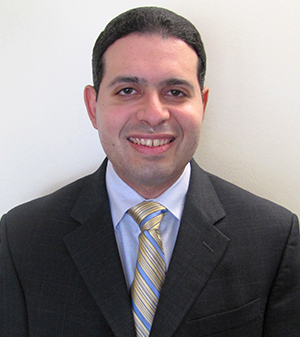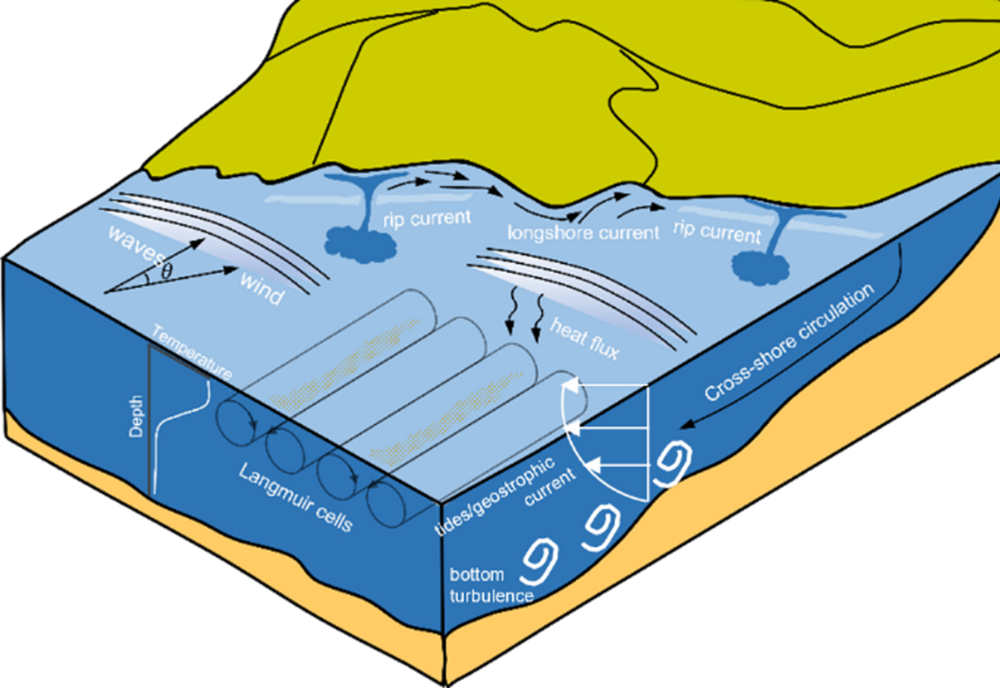The USF’s College of Engineering is proud to announce that Andres Tejada-Martinez, Ph.D., a professor in the Department of Civil and Environmental Engineering at USF, is leading groundbreaking research on coastal turbulence with his latest project, “Detached Eddy Simulation of Nearshore Langmuir Circulation.” The study aims to advance the understanding of turbulence dynamics in shallow coastal environments.
The research aims to explore Langmuir circulation, a wind and wave-driven phenomenon that is well-known to affect vertical distributions of momentum, heat, salinity, and particles in the upper ocean. Professor Tejada-Martinez’s work will employ detached eddy simulation (DES), a numerical technique adapted from aerospace engineering to study interactions between Langmuir circulation and common nearshore processes such as rip currents, breaking waves, and heat flux-driven currents.

According to Professor Tejada-Martinez, “Langmuir circulation is a form of fluid turbulence induced by interaction between surface waves and wind-driven currents. This phenomenon occurs on windy days in the open ocean away from the surf-zone. However, our preliminary simulations strongly suggest that this turbulence regime can be generated via interactions between winds, waves and rip currents nearshore. If we can fully show that this is the case, then this finding would have important implications on our understanding of how sediments and nutrients can be transported across the surf-shelf shelf transition zone, especially during storm conditions.”
The project will use numerical simulations of idealized two-kilometer-wide surf-shelf transition zones with depths reaching 15 meters. This approach will allow researchers to better understand near-shore turbulence dynamics, with potential implications for coastal resource management and predictive ocean modeling.
Mark Ross, Ph.D., a water resources professor in USF’s Department of Civil and Environmental Engineering, praised Tejada-Martinez’s contributions. “Professor Tejada-Martinez has been a pioneer in discovering and understanding Langmuir turbulence on the inner coastal shelf,” Ross said. “His innovative use of detached eddy simulation to study this complex process has opened new avenues for research in coastal ocean dynamics. This project is a testament to his leadership in the field and his commitment to advancing our understanding of how natural forces shape coastal environments. The outcomes of this work will undoubtedly have far-reaching impacts on coastal management and environmental protection efforts.”
The project will also provide training opportunities for a graduate student and a postdoctoral fellow, offering firsthand experience in turbulence modeling and physical oceanography. Findings appear at leading scientific conferences and published in peer-reviewed journals.
This research highlights the innovative work conducted at USF’s College of Engineering, reinforcing its reputation as a leader in innovative scientific advancements.
Stay up to date with USF College of Engineering!
Follow us on Facebook | Instagram | LinkedIn | X/Twitter | YouTube | News Stories | Flikr | Threads
Subscribe to our Bi-Annual Envision Newsletter | Subscribe to our Monthly Deancast Newsletter
